Editor’s Note: On February 26 and 27, 2015, the Brookings Center for East Asia Policy Studies (CEAP) hosted a dialogue among China specialists from Japan and the United States in which the participants discussed their respective analyses of Chinese foreign and security policies. The rationale for such a dialogue is that it is in the interest of both countries to align their assessment of China as much as possible as the basis for a chief task of their alliance: managing the revival of China as a great power.
On December 18 and 19, 2014, CEAP sponsored a similar Japan-American dialogue on the Chinese economy and political system.
Both the December and February dialogues included a public program, convened on December 19 and February 27. Video and audio recordings, complete transcripts, and some presentations from
both events are available on the Brookings website.
That there should be a range of views on a country as diverse and complex as China should not be a surprise. Chinese themselves differ about their own country. American China specialists vary in their assessments, as do Japanese China specialists. Each analyst starts with his or her assumptions, biases, and methodologies. What was remarkable about the discussions in later February was the degree of overlap in the views of the Japanese and American scholars who participated.
Security Policy
In the public session on February 27, David Finkelstein of CNA’s China Studies Division presented a mainstream view of China’s national security policy. His major points were:
- Internal and external security are at the top of Beijing’s policy agenda, with the same priority as economic development.
- The priority accorded national security stems from the perception of a deteriorating domestic and foreign security environment, and a concern that the regime is not up to the challenges of coping effectively.
- In this context, the key elements of China’s security strategy are to ensure the dominance of the CCP regime; enhance the regime’s capacity, including military capacity, to execute security policy; defend China’s sovereignty; and foster a positive peripheral environment.
With an unprecedented array of instruments of national power at its disposal, the Chinese leadership is using them in a proactive way to shape the Asian regional environment in China’s favor.
Transcending its past, the People’s Liberation Army (PLA) is acquiring the ability to defend China beyond its borders with naval, air, and missile forces (complementing the traditional emphasis on ground forces). The PLA is becoming a more significant actor in China’s decision-making circles. With civilian leaders, it is an institution that has progressively tackled areas for reform and improvement and will continue to do so.
Masafumi Iida of Japan’s National Institute of Defense Studies (NIDS) presented the counterpart analysis. In his view, China’s grand strategy is the “great rejuvenation of the Chinese nation,” which, among other things, would facilitate Chinese dominance in the Asian region. Security policy and a strong military contribute to that fundamental objective, even as it sometimes produces frictions with neighbors. The fundamental focus of China’s defense and security strategy is to pursue its “core national interests,” specifically the recovery of “lost territories” and the protection of maritime rights, executed through military modernization and strengthening power projection capabilities. A variety of factors fuel this security strategy: political, economic, institutional, military, plus interactions with China’s neighbors and the United States. Operationally, it has led to increasingly assertive and aggressive external activities and provocative behavior by the PLA.
The focus of PLA modernization lies in improving nuclear and conventional deterrence, improving its ability at sea and air control as well as amphibious and “far seas” operations. Countering U.S. intervention in a conflict requires a variety of capabilities, including missiles, space, and cyber.
Michael O’Hanlon of the Center for 21st Century Security and Intelligence at Brookings provided global context for these developments in China. He pointed out that China has both the world’s second largest economy and second largest military budget, and is undertaking the world’s most rapid program of military improvement. On the other hand, China’s military budget is about 1.5 percent of its GDP, placing China very much in the center of the world’s major countries by that measure. The United States military budget is 3.5 percent of its GDP, and the figure for Japan is about one percent. Most NATO members average about 1.4 or 1.5 percent. O’Hanlon argued that China’s increasing power would make it more assertive, but that even “China hasn’t quite figured out what that means. They haven’t quite figured out just how assertive they want to be.” They also haven’t figured out what costs they are willing to pay to achieve certain goals, such as the return of Taiwan or hegemony in the South China Sea and East China Sea. We are probably witnessing foreign policymaking by incrementalism and improvisation, as well as trail and error—not unlike what often happens in the United States, in fact. This situation, if true, is certainly preferable to the patient execution of a sinister grand strategy of conquest, but it may not be altogether safe and stabilizing either, depending on decisions made from Beijing to Tokyo to Washington to Manila to Hanoi and beyond.
Foreign Policy
Concerning Chinese foreign policy, Bonnie Glaser of the Center for Strategic and International Studies and other panelists agreed that the “rejuvenation of the Chinese nation” is the goal of China’s grand strategy. But that objective sometimes conflicts with the foreign policy task of ensuring a peaceful international environment and leads to mixed messages. Yet China’s goal is not, as some think, the ejection of the United States from the Pacific. However, it does seek to reduce U.S. influence and negate American alliances, even as it asks for restraint by others when it comes to China’s “core interests.” At the same time, it is taking initiatives to change the existing international order, not by attacking existing institutions but by creating new ones whose goals and norms are more to Chinese liking.
As China’s power has grown, its behavior has grown more assertive and proactive. It increasingly demands deference and accommodation from its smaller neighbors. Its foreign policy style has been both reactive and proactive, with the trend in the direction of the latter. There are both internal and external drivers for its recent actions. Public opinion, national security and law enforcement agencies, the actions of others, and assessments of the effect of China’s own actions all contribute to policy outcomes.
David Shambaugh of George Washington University supplemented Ms. Glaser’s presentation. He observed that China is conflicted concerning its global identities (plural) and its role in the world. As a result, its foreign policy exhibits a variety of emphases–sometimes accommodating, sometimes engaging actively, and sometimes domineering. A second consequence is that Beijing is ambivalent regarding its approach to the post-World War II international order. It has always been unhappy in a normative sense about that order, which finds expression in its attention to South-South relations. Looking forward, there are debates about whether it should continue to act pragmatically toward the existing order, as it has since the late 1970s, or try to alter or even overturn that order. Finally, despite China’s growing hard power, its soft power is mixed at best and is actually declining.
Akio Takahara of the University of Tokyo dwelt on the ambiguities in Chinese foreign policy, which reflect debates within China about its external direction. Should it be assertive or conciliatory in its basic stance? In the wake of the global financial crisis, should it reject a Washington-made, one-size-fits-all approach to world financial management and tout its “Beijing consensus,” or should it stick to the reformist path of privatization, liberalization, and balanced distribution of benefits? Should it heighten vigilance in response to the Obama administration’s “rebalance” initiative or should it stick with a more low-profile diplomacy, including the promotion of a “new pattern of big country relations”? Regarding Japan’s purchases of the Senkaku Islands from its private citizen, should China respond with suspicion and hostility or with moderation and understanding?
This ambivalence has been reflected in a pattern of “gentle words and tough deeds.” In its rhetoric concerning foreign policy in East Asia, it emphasizes conciliation and cooperation, but its actions over the last several years display assertiveness and provocation. Also driving this pattern is some inconsistency in Beijing’s long term goals (peace vs. regional dominance) and difficulties in policy coordination, both between agencies and concerning the use of foreign policy to foster national unity.
Rumi Aoyama of Waseda University concurred that there is a degree of inconsistency between China’s multiple foreign policy goals (e.g., fostering a favorable international environment vs. protecting sovereignty and maritime rights in the East and South China Seas). But she also stressed the evolutionary character of its foreign policy. For example, the scope of China’s foreign policy activism in its periphery has gradually expanded from its immediate neighborhood to regions like Central Asia, and its definition of “Asia” has expanded in the process. It relies on economic diplomacy in ways that it did not several decades ago (e.g., Asian Infrastructure Investment Bank, BRICS New Development Bank) and sees new opportunities for activism in the multilateral arena. Generally, Beijing has been more precise and assertive in defining and defending its international interests. These trends reflect not only an evolution in intentions but also in capacity to act on intentions.
The difference between these American and Japanese scholars then is one of emphasis, not one of fundamental outlook. A difference in emphasis among analysts should not be surprising, since China presents a multi-faceted external policy and utilizes a variety of instruments of national power, adjusting the mix of instruments to fit its perceptions of circumstances. Japan’s geopolitical position is different from the United States—if only because of the factor of distance. It is true, moreover, that there is a range of views within the China-watching communities of each country.
Several issues surfaced during the course of the discussions.
The first is the degree to which Chinese rhetoric about Chinese foreign and security policy is relevant to the actual conduct of policy. There is no question that there is much about China’s external behavior that is remote from what theoreticians say about policy (and sometimes the theory is merely post-hoc rationalization), that does not mean that rhetoric is totally irrelevant. Discussions of doctrine are a part of the policy-making process. Changes in specific formulations may signal changes in conduct. What is not said may be as important as what is said. And there is need for more studies of specific cases to determine whether and how rhetoric guides behavior.
A second issue is the role of factions in explaining Chinese foreign policy, particularly concerning Japan. Some Japanese analysts would place most or all of their emphasis on the factor of factions, but they are not a majority. One cannot say that factions are unimportant; they can be and sometimes are significant in struggles over policy. Concerning the explanation of China’s Japan policy, Japanese scholars tend to believe that factions were more important in the Hu Jintao era, and that his positive initiatives occurred when he was more powerful. American China specialists would place most emphasis on Beijing’s perception of its national interests, the role of institutions in policy-making, and on the behavior of other actors.
A third issue is the role of nationalism in China’s Japan policy. Both Americans and Japanese scholars agreed on several points of consensus. First of all, the PRC regime has fostered anti-Japanese sentiment for more than two decades, through the education system and the media. Second, the level of anti-Japanese elements in Chinese propaganda varies (stronger under Jiang Zemin than under Hu Jintao). Third, anti-Japanese sentiment among the public can turn into self-mobilized political action, in the form of physical attacks on Japanese entities in China and on Japanese websites. Fourth, the Chinese leadership regards these nationalistic outbursts as a double-edged sword that has tactical utility in putting Japan on the defensive, but they can also be used by protesters against the regime. Fifth, the regime has the power to close down mass protests, even those against Japan, and there are some issues on which protest has never been allowed (e.g., Taiwan).
The Brookings Institution is committed to quality, independence, and impact.
We are supported by a diverse array of funders. In line with our values and policies, each Brookings publication represents the sole views of its author(s).

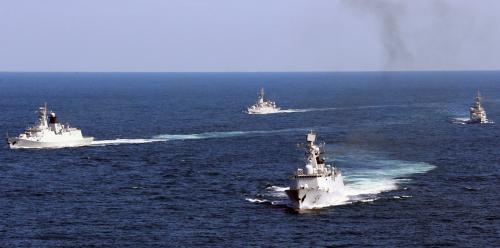
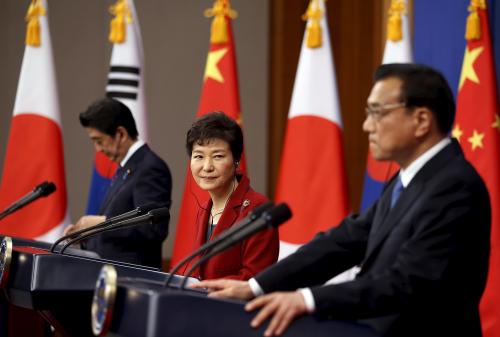
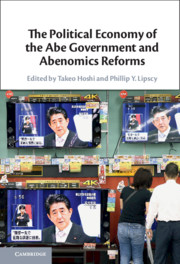
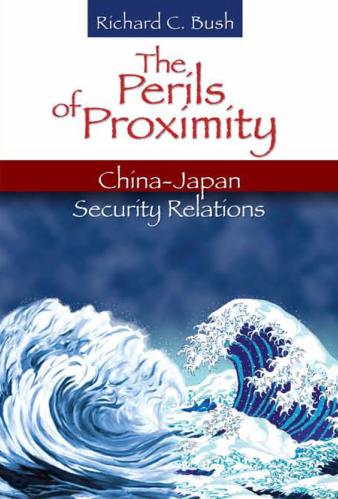
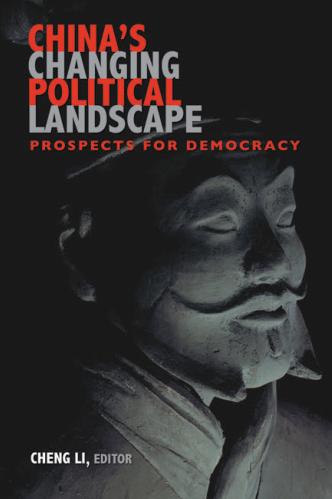




Commentary
American and Japanese scholars view China’s security and foreign policies
March 30, 2015